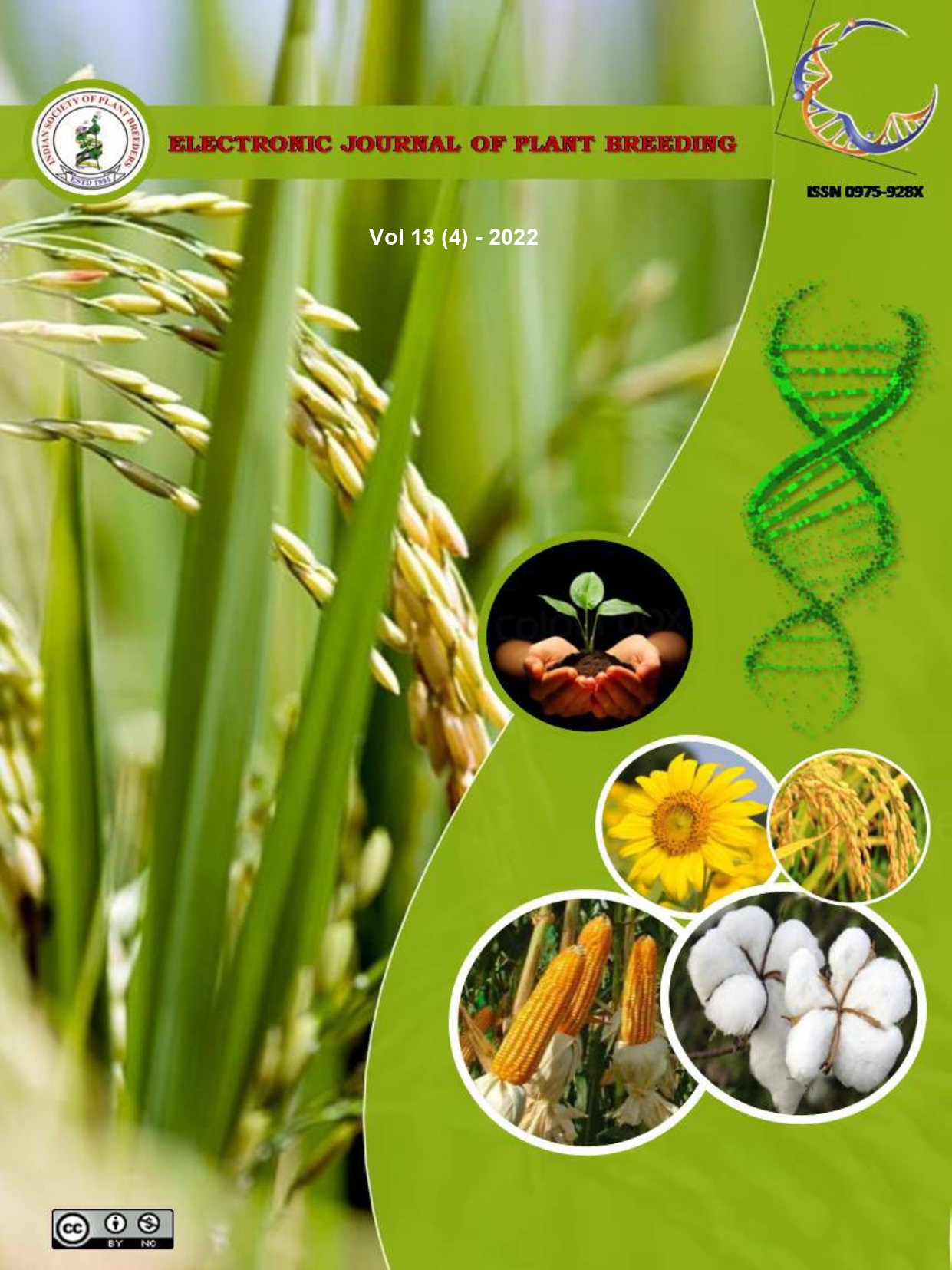Studies on gene action and combining ability in rice (Oryza sativa. L) hybrids
Abstract
The study was carried out to learn about the nature of gene action and combining ability in rice hybrids for grain yield and its component traits. For this, eight lines were crossed with four testers in an L x T mating design. The analysis of variance revealed significant variance for all the characters studied among the parents and hybrids. GCA variances were higher than SCA variances for most of the characters, indicating the predominance of additive gene action, while SCA variances were higher than GCA variances for number of productive tillers per plant, pollen fertility, hulling, milling, head rice recovery and grain yield per plant, indicating the predominance of non-additive gene action. The testers JMS 13A (3.91) and CMS 59A (2.46), as well as the lines MTU 1153 (9.52), RNR 28355 (3.26) and RNR 26085 (3.09), were the best combiners for grain yield and important yield components due to positive GCA effects. Based on SCA effects and corresponding mean performance for grain yield and its component traits, the hybrids CMS 59Ax RNR 26015, CMS 23A x JGL 25960, CMS 64Ax RNR 26015 and JMS 13Ax MTU 1153 were identified as the best specific combiners. These hybrids could be tested in multi-environment trials for commercial use.

